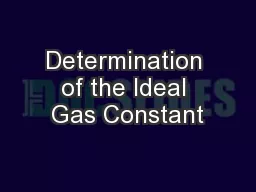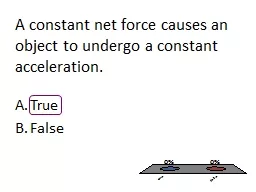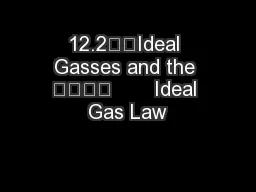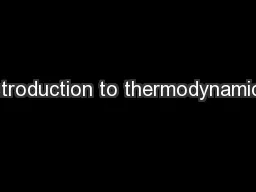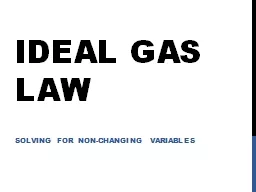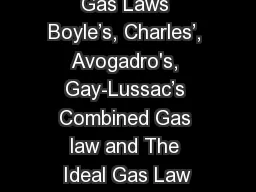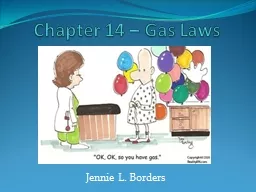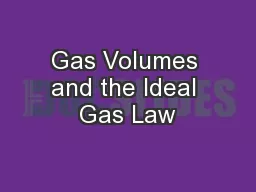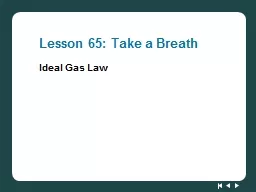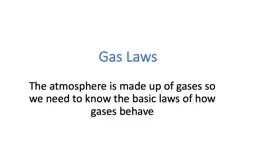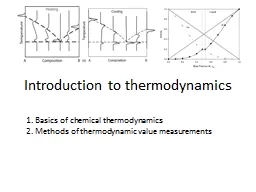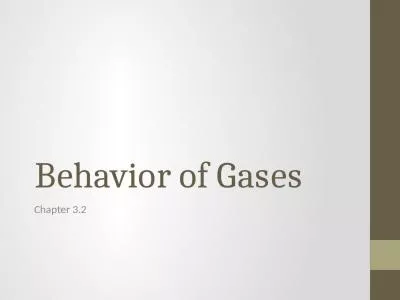PPT-Determination of the Ideal Gas Constant
Author : ellena-manuel | Published Date : 2017-01-13
Go to browse and the full screen Equipment required pipette bulb 400 mL beakers Florence flask rubber stopper and tube assembly stand test tube clamp Bunsen burner
Presentation Embed Code
Download Presentation
Download Presentation The PPT/PDF document "Determination of the Ideal Gas Constant" is the property of its rightful owner. Permission is granted to download and print the materials on this website for personal, non-commercial use only, and to display it on your personal computer provided you do not modify the materials and that you retain all copyright notices contained in the materials. By downloading content from our website, you accept the terms of this agreement.
Determination of the Ideal Gas Constant: Transcript
Download Rules Of Document
"Determination of the Ideal Gas Constant"The content belongs to its owner. You may download and print it for personal use, without modification, and keep all copyright notices. By downloading, you agree to these terms.
Related Documents

